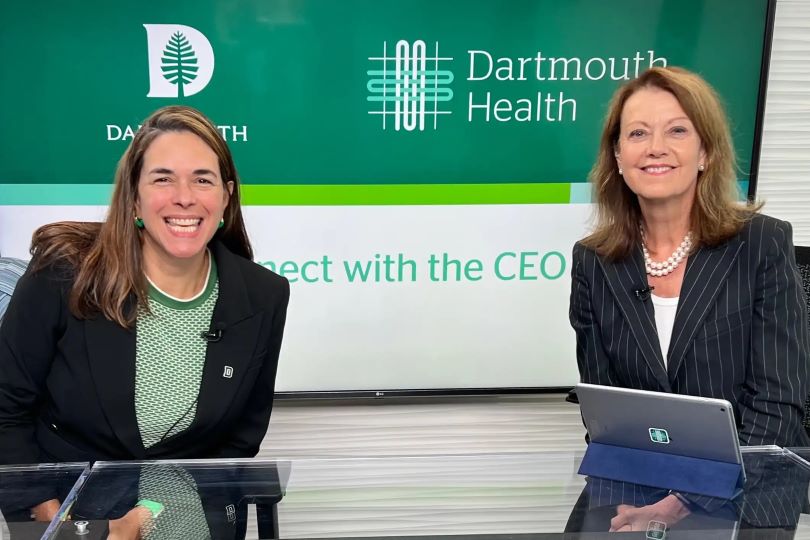
President Sian Leah Beilock joined Dartmouth Health CEO and President Joanne M. Conroy, MD, on Sept. 12 for the latest installment of Conroy's "Connect with the CEO" series. "My goal as president is really to put wellness front and center, and at Dartmouth—a place where the community is so connected—we can do that in a way that I think is unparalleled," President Beilock said of her mission to foster a culture of mental health in the Dartmouth community, working with Dartmouth Health.
President Sian Leah Beilock, PhD, joined Dartmouth Health CEO and President Joanne M. Conroy, MD, on Tuesday for the latest installment of Conroy's "Connect with the CEO" series. The two leaders had a candid, wide-ranging conversation about the long-standing relationship between the college and health system, mental health, Beilock's professional and academic path that led to Dartmouth, and their shared passion for promoting women in leadership.
"My goal as president is really to put wellness front and center, and at Dartmouth—a place where the community is so connected—we can do that in a way that I think is unparalleled," Beilock said of her mission to foster a culture of mental health in the Dartmouth community, working in tandem with Dartmouth Health. "I think when we put our heads together, we can do some pretty spectacular things."
For more information on Dartmouth Health and to watch Conroy and Beilock's full conversation, click here.